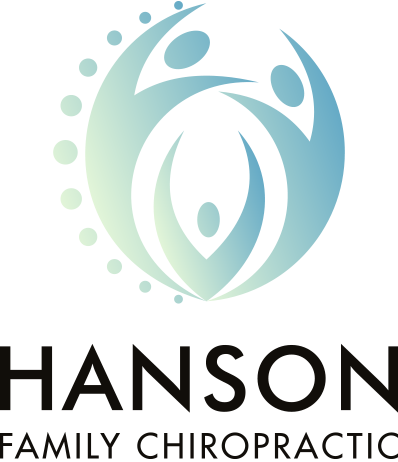“Ouch! My legs hurt, Mommy!” Have you ever had your child wake up in the middle of the night complaining of leg pains? Do you remember having them as a child? These are commonly referred to as “growing pains” and can be defined as recurrent leg pain in children ages 2-12 years. The term “growing pains” was first seen in medical literature in 1823. There were many different explanations for these pains. Some, such as the assertion that pains are a symptom of rheumatic fever, have been discredited.
What are Growing Pains?
Although there are no known medical causes, theories of cause range from muscle fatigue to juvenile arthritis. According to a 1984 study, limb pain was a presenting complaint in 7% of pediatrician visits. A South Australian study published in the August 2004 issue of the Journal of Pediatrics found that approximately 36.9% of children 4-6 years of age experienced growing pains. This was nearly one third of the children in the population. These leg pains are usually brushed off as normal occurrences by medical doctors who contribute them to daily physical activity. Parents are given few to no options for treatment. Typically, massaging the legs and the use of analgesics are the only suggestions. Parents are told this is normal during the growth process and it will pass. This offers no comfort to parents who awaken to their child’s cries night after night. Should we accept this weak diagnosis of “growing pains” that affect 25%- 40% of children? The answer is “NO!” Are there other options available to alleviate these leg pains? YES! Try Chiropractic!
Getting to the Cause
So, what causes these “growing pains”? From a chiropractic standpoint, we must look at the biomechanical issues. We must first understand the growth process time line. The first five years of a child’s life is the time of greatest spinal growth. During the first year of life, the spine increases 12 cm in length and another 15 cm between 1 and 5 years of  age. Between 5 and 10 years of age, thegrowth rate decreases to 10 cm. There is another increase at puberty between approximately 10 and 18 years of age with 20 cm of spinal grown in males and 15 cm in females. Logically, if something interferes with this growth process, there may be problems. What if a child was put into a baby walker before his/ her body was ready to walk? This premature walking assistance can alter biomechanics, leading to postural abnormalities, disruption of proper locomotion skills, and also injury to the child. Other interferences of the growth process may include birth trauma, a fall, sports injuries, and overly sedentary lifestyles.
age. Between 5 and 10 years of age, thegrowth rate decreases to 10 cm. There is another increase at puberty between approximately 10 and 18 years of age with 20 cm of spinal grown in males and 15 cm in females. Logically, if something interferes with this growth process, there may be problems. What if a child was put into a baby walker before his/ her body was ready to walk? This premature walking assistance can alter biomechanics, leading to postural abnormalities, disruption of proper locomotion skills, and also injury to the child. Other interferences of the growth process may include birth trauma, a fall, sports injuries, and overly sedentary lifestyles.
Another important point is that many of these children also have complaints of spinal pain in addition to the leg pain. There is little medical research, but, much of what there is focuses only on growing in the legs. Chiropractors look at the body as a whole and not as separate parts. Chiropractors recognize that, if there is stress in one area of the body, the rest of the body will somehow compensate for this stress.
How Does Chiropractic Help?
Chiropractors work with the spine and nervous system. The nervous system controls every system, organ, and cell in the body. The spinal column houses the nerves, with nerve roots exiting between each spinal bone, called vertebrae. Stress overload, such as physical, emotional, or chemical stress, affects nerve system function. Causes of stress overload in the child originate from physical traumas such as the birth process, postural compensations (i.e. sedentary postures and backpack carrying compensations), and common childhood injuries.
Nerve stress can affect any system or organ of the body. The doctor of chiropractic performs a thorough exam of the child’s spine and locates areas of misalignment contributing to this nerve system stress. The specific chiropractic adjustment restores nerve system function and the child’s whole body benefits. Growing pains is one common disorder resulting from nerve system stress. The child may feel leg pain, which can range from an achy, throbbing feeling to a sharp pain.
Altered biomechanics and spinal misalignment, especially in the lower lumbar spine and pelvis, creates imbalances in the quadriceps, hamstring, and calf muscles, which may contribute to leg pain. Pelvic misalignment can lead to leg-lengthinequalities; the child is unevenly distributing his or her weight, placing additional stress and strain not only on the spine, but feet, ankles, and knees as well.
I can recall one of my young patients with severe leg pains. He was three years old and had leg pains both day and night. All his parents knew to do was rub his legs, with minimal relief. He couldn’t run or play for very long without the pain returning. He also said his “butt” hurt (pointing to his lower back area) when he experienced leg pains. I found a significant spinal misalignment in his lower back area, which I adjusted. Within a week of chiropractic care, his leg and “butt” pain were practically gone! What a relief to this three-year old boy and his parents!
